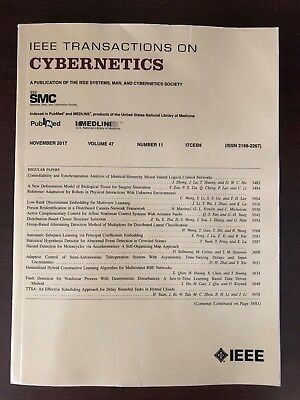A Subspace Search-Based Evolutionary Algorithm for Large-Scale Constrained Multiobjective Optimization and Application
IF 9.4
1区 计算机科学
Q1 AUTOMATION & CONTROL SYSTEMS
引用次数: 0
Abstract
Large-scale constrained multiobjective optimization problems (LSCMOPs) exist widely in science and technology. LSCMOPs pose great challenges to algorithms due to the need to optimize multiple conflicting objectives and satisfy multiple constraints in a large search space. To better address such problems, this article proposes a dynamic subspace search-based evolutionary algorithm for solving LSCMOPs. The main idea is to initially allow the population to search in a low-dimensional subspace to increase convergence, then the searched subspace is gradually expanded to encourage the population to further search the full decision space. Specifically, the contribution of each decision variable to the evolution is first calculated using the proposed decision variable analysis method. Then, a probability-based offspring generation strategy is developed to encourage the population to preferentially search in a low-dimensional subspace composed of decision variables with high contribution degrees, thus speeding up the early convergence. With the continuous progress of evolution, the subspace is gradually expanded to ensure that the population can better explore the entire space. The performance of the proposed algorithm is evaluated on a variety of test problems with 100–1000 decision variables. Experimental results on four test suits and three real-world instances show that the proposed algorithm is efficient in solving LSCMOPs.一种基于子空间搜索的大规模约束多目标优化进化算法及其应用
大规模约束多目标优化问题(LSCMOPs)在科学技术中广泛存在。由于LSCMOPs需要在大的搜索空间中优化多个相互冲突的目标并满足多个约束,因此对算法提出了很大的挑战。为了更好地解决这类问题,本文提出了一种基于动态子空间搜索的LSCMOPs进化算法。其主要思想是首先允许种群在低维子空间中搜索以提高收敛性,然后逐步扩大搜索到的子空间,以鼓励种群进一步搜索整个决策空间。具体而言,首先使用所提出的决策变量分析方法计算每个决策变量对进化的贡献。然后,提出了一种基于概率的子代生成策略,鼓励种群在由贡献度高的决策变量组成的低维子空间中优先搜索,从而加快了早期收敛速度。随着进化的不断进行,子空间逐渐扩大,以确保种群能够更好地探索整个空间。在具有100-1000个决策变量的各种测试问题上对所提出算法的性能进行了评估。在4个测试套件和3个实际实例上的实验结果表明,该算法能够有效地求解LSCMOPs问题。
本文章由计算机程序翻译,如有差异,请以英文原文为准。
求助全文
约1分钟内获得全文
求助全文
来源期刊

IEEE Transactions on Cybernetics
COMPUTER SCIENCE, ARTIFICIAL INTELLIGENCE-COMPUTER SCIENCE, CYBERNETICS
CiteScore
25.40
自引率
11.00%
发文量
1869
期刊介绍:
The scope of the IEEE Transactions on Cybernetics includes computational approaches to the field of cybernetics. Specifically, the transactions welcomes papers on communication and control across machines or machine, human, and organizations. The scope includes such areas as computational intelligence, computer vision, neural networks, genetic algorithms, machine learning, fuzzy systems, cognitive systems, decision making, and robotics, to the extent that they contribute to the theme of cybernetics or demonstrate an application of cybernetics principles.
 求助内容:
求助内容: 应助结果提醒方式:
应助结果提醒方式:


